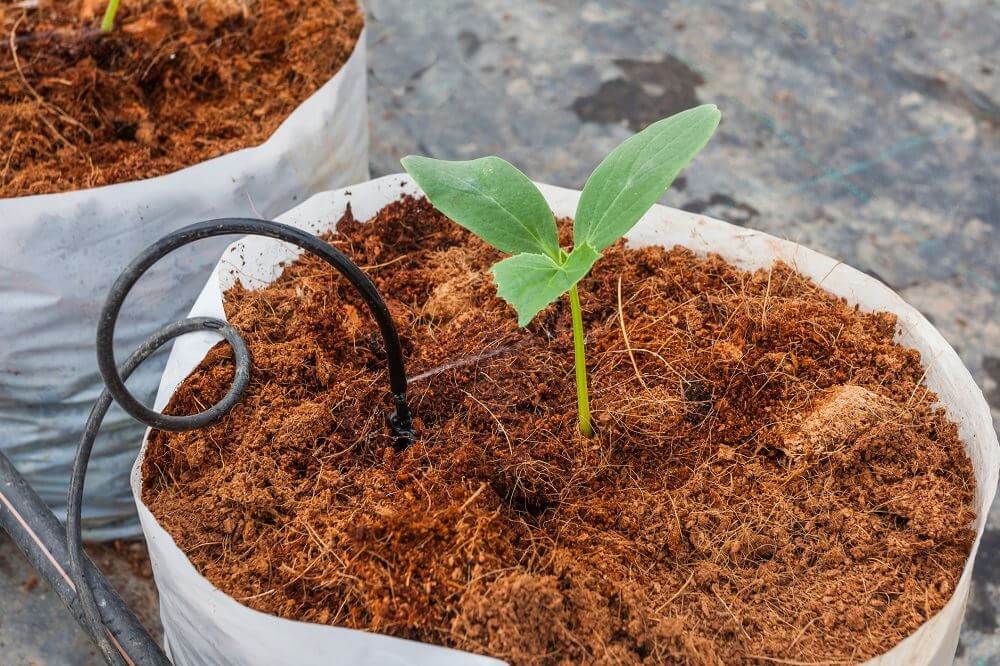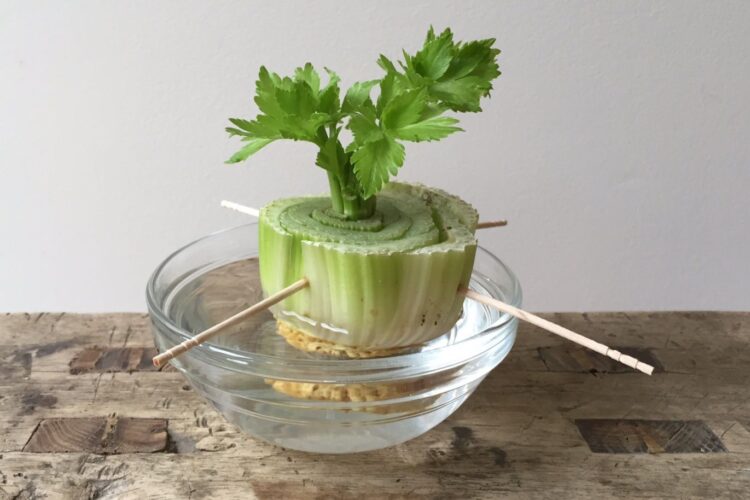Vegetables don’t always have to start from scratch. In fact, there are many ways in which you will be able to generate new plants from what you already have. Plant propagation is the act of increasing the number of viable plants through asexual reproduction, also known as vegetative propagation. This means producing new plants from vegetative parts of the original plant, such as stem, roots, nodes or leaves. The most common types of propagation include cuttings, grafting and budding.
Cuttings
There are many benefits of using cuttings to increase your vegetable plant numbers. First, the new plants you create are exact clones of the mother plant ~ this means that if you have a plant with particularly favourable characteristics (high yield, good structure, etc) your new plants will have the same characteristics. Your cuttings, having already established leaves or stems, will mature quicker so your harvest will happen sooner than when using seeds or seedlings. Additionally, you are saving on costs by cutting down the need for seeds or seedlings. On the other hand, there are a few disadvantages to using cuttings.
First, you might be decreasing the biodiversity of the species and surrounding land. By creating clones, you will recreate any anomalies in the plant, which might include high susceptibility to certain diseases. So it is important to keep a close watch on your mother plants to ensure they are not affected by common diseases. When taking cuttings from mother plants, you need to ensure that your cuttings contain the section of a plant that holds the genetic material. Not all plants carry their genetic details in their stems, or leaves. In some cases, you will need to ensure your cutting contains the growth points, or nodes.
Common plants that can be successfully grown from stem and leaf cuttings include tomatoes, pumpkin, marrow (zucchini), cucumber, nasturtium, eggplant, peppers and purslane. When taking a cutting, make sure your scissors or knife are clean and sterile. You will also need a rooting hormone, available in powder form from your nursery, as well as a rooting medium ~ moist coco coir, sphagnum moss, peat moss or vermiculite. Leaf cuttings need one to two centimetres of stem (called the “petiole”).
Do a quick dip of the cutting into the hormone powder. Knock off the excess powder before inserting the base of the leaf in the rooting medium. Stem cuttings are usually seven centimeters or more long. Cut them from the stem at about one centimeter below a node (leaf joint). Dip the cutting into the rooting hormone, knock off the excess and place into the rooting medium. Remove enough lower leaves so about half of the stem can be inserted into the rooting medium. Keep your rooting medium moist, well lit and ventilated. Once roots have developed, you can transplant into soil.

a rooting medium, make sure to keep it moist at all times
Grafting
This method involves joining a stem piece or a single bud on to the stem of a plant that has roots. The stem piece or bud is called the scion, and the plant with roots is called the rootstock. Grafting is commonly used to produce fruit trees, sometimes with more than one variety of the same fruit species growing from the same stem. The tissues of the graft become integrated with the tissues of the rooted plant and develop as a single plant over time.
Grafting can only be done with trees that are genetically compatible. Rootstocks and scions that belong to the same botanical species are always compatible, so anything that is an apple, can be grafted to another apple, for example. Rootstocks and scions from different species in the same genus are also usually compatible. An example of this is within the genus Prunus or the stone fruit genus, which includes apricots, peaches, plums, nectarines, cherries and almonds. Finding rootstock to buy can be difficult.
Most nurseries do not sell them as they will sell the tree once grafted. But, grafting can also be used to restart or improve productivity of an old tree.
There are a few different ways to graft a tree. Bark grafting is the most successful option to restart fruit development on an old tree, or to change the variety on a productive rootstock. For this technique, you peel the bark back to expose the cambium and then insert the scion. In whip and tongue grafting this is done when corresponding cuts through rootstock and scion material are joined end to end and then bound. The interlocking ‘tongues’ add structural support to the join as the cambium layers heal and fuse together, as well giving a larger surface area of cambial contact. This method takes practice, and you will need a very sharp knife, elastic bands and wax to hold the join together. Professional grafters will invest in grafting cutters which cut both bits to be joined in perfect symmetry, ensuring maximum contact between the two cut parts.
Budding
Budding or bud grafting can be done in summer when trees are starting to produce buds. Find a vegetative bud (leaf bud) about halfway down a branch on the selected tree. For this it is helpful to know that fruiting buds tend to be rounder and stick out from the stem, where vegetative buds tend to be pointier and pressed against the stem.
Cut out a one centimetre oval or shield shape around the bud, being careful to only cut into the bark and not the pith. The pith is the coloured, fleshy part of the branch that runs right through the centre. Remove any existing leaf from the removed bud but keep the leaf stalk (petiole). On the branch you will be grafting on to, remove all leaf buds or side branches. Make a two centimetre T-shaped cut on the bark of the branch. Peel back the bark and insert the new bud into the branch. Make sure the bud is pointing in the same direction on the new branch as it was on the old. Wrap the area around the bud with grafting tape or elastic bands.
Growing from scraps
Re-growing vegetables also doesn’t have to be very complicated and scientific. A number of common vegetables can be grown from their discarded roots. Lettuce heads, cabbages, spinach, fennel and celery can be grown by keeping the base of the plant in water. You will start to see new growth of leaves as long as your plants are getting adequate light and you are changing the water regularly.
You can choose to replant these once roots develop, or keep them growing on your windowsill for convenience. Root vegetables such as carrots, turnips, radish and beetroot can be grown in a similar way, by putting their tops (the parts with the leaves) in water. You can harvest and use these greens as they grow, or you can allow the roots to continue growing until the plants are ready to be transplanted back into the ground.
Onions, green onions, garlic and leeks can be regrown from the rooting base of the bulb or stem. Take a small section of the base of a bulb or stem, with the roots attached, and place it in a shallow dish of water. Fairly quickly, new, green material will begin to grow from this base section. These re-sprouting sections can then simply be harvested again. Or you can plant them out in your garden or in pots placed near a sunny windowsill.

